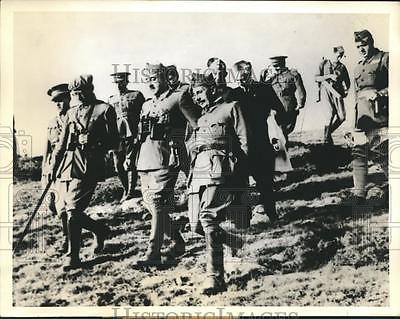The Nationalists are ready to begin their massive new siege to take the north of Spain. The Army of the North of both sides have been assembled throughout the top half of Spain. General Fidel Dávila has 90,000 troops, 25,000 of them through three Italian divisions. They also have a massive cache of weapons, plus the German Condor Legion aircraft, plus Spanish and Italian planes. Their troops are fresh and the Nationalists are ready after the end of the battle of Brunete at the end of July. The Republicans have 80,000 in the region under General Mariano Gámir Ulíbarri. However, their planes are useless, and morale is low. The Basque soldiers included in the numbers are tired and devastated from a loss of their autonomous region and their capital Bilbao, and are already considering surrendering to Italian troops in order to survive.
 The Nationalist 1st Navarrese Brigade attacks the frontlines between Valdecebollas in the Palencia region and Cuesta Labra in order to block Republican troops south of the Cantabrian mountains. This is in preparation to start capturing Republican territories in the mountain region over the coming week and capture the entire Cantabrian region and Santander city on the coast.
The Nationalist 1st Navarrese Brigade attacks the frontlines between Valdecebollas in the Palencia region and Cuesta Labra in order to block Republican troops south of the Cantabrian mountains. This is in preparation to start capturing Republican territories in the mountain region over the coming week and capture the entire Cantabrian region and Santander city on the coast.
August 15
The Nationalist troops advance through Barruelo up to Peña Rubia, Salcedillo, Matalejos and Reinosilla, all mountainous villages, without resistance, with the exception of the Republicans fighting back at nearby Portillo de Suano.

- also August 15
The Servicio de Inteligencia Militar (SIM) is created. Having SIM means that secret police activities are now in the control of the government again, rather than Communist and Soviet hands. Political meetings have now been banned in Barcelona, and the constant fighting is undermining the left-wing groups. Barcelona is the central hub for Republicans mixing, with anarchism, socialism, regionalism, and communism coming together to produce infighting. The Republican war effort is hindered by these internal arguments. Peace has not truly been restored in Barcelona since the outbreak of fighting in May.
August 16
The Nationalists take Portillo de Suano and the industrial factory area outside the town of Reinosa during the day, and take central Reinosa at dusk. Meanwhile, the Navarrese Brigade are advancing, furthering the Nationalists’ control of the region. Italian troops sent from Burgos are heading to Lanchares, 17 kilometres from Reinosa, and also San Miguel de Aguayo, a mountainous 14 kilometres trek north from Lanchares. The Cantabrian area is quickly being swallowed by Nationalist troops with little to no resistance in the sparsely populated regions.

August 17
The Republicans still hold Campoo, just 4 kilometres east of Reinosa, with 22 battalions camped there. However the Nationalists have now encircled them completely.
In Barcelona, the Socialist Party and the Communist Party sign a pact to ally as one group, to bring stability to the Republicans’ effort. The Communist party expected a merger, in line with international Communist groups. The Spanish Republican government does not like the idea of the Communists controlling the Socialist party, but the unity pact agreement leaves the groups independent but formally allied, meaning the Communists do not gain any extra control over the government.

August 18
Nationalist forces take the town of Santirude as they surge further north through Cantabria, while the Italians claim San Pedro del Romeral and San Miguel de Luena, only 45 kilometres south of Santander itself.
August 19
Cabuérniga, Bárcena de Pie de Concha and Entrambasmestas all fall to the Nationalists.

August 20
Italian troops claim Villacarriedo and Navarrese forces advance towards Torrelavega and Cabezón de la Sal. Santander is now in sight, just 30 kilometres from Torrelavega. The Nationalists are destroying the northern part of Spain and the Republicans cannot do anything to stop them. The Nationalists have overwhelming support, troops and artillery. The Basque, Cantabrian and Asturian units cannot work together against the speed and power of the Nationalist army. The Basques, having already lost their capital Bilbao, are at the morale limits and begin to mutiny as the Nationalists sweep through Cantabria.

~~
This is not a detailed analysis, just a highlight (lowlight?) of the week’s events. Things get lost in translation – Feel free to suggest an addition/clarification/correction below. The more the world remembers, the better. All photos and captions are auto-linked to source for credit, and to provide further information.

